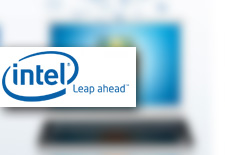So you do web design, image editing, or occasional digital design tinkering. I bet you need a digital ruler and color picker.
You will definitely encounter the need to determine distances between two points on your screen. And unless you have memorized all html color codes, you need something to tell you what a certain color's corresponding code is. Precision or even proximity are factors. The following tools should be useful.
Rulers-----
JR Screen Ruler 
The JR Screen Ruler is a tool that enables you to accurately measure anything on your screen. It does measurements for graphics, web page browser sizes, and more. It displays distances in pixels, inches, picas or centimeters.
WonderWebware.com Screen RulerThis tool measures the distance between two points on your screen or on a web page in pixels, centimeters, or millimeters. It does horizontal and vertical measurements with its four-ticker, transparent interface.
-----
Both rulers mentioned above are light. Both do horizontal and vertical measurements. I prefer JR Screen Ruler's simplicity, excellent interface, and hotkeys (function). However, the absence of JR Screen's ability to measure lines other than verticals and horizontals makes me consider the WonderWebware Screen Ruler. WonderWebware also does (only) horizontal and vertical measurements but it offers a
four-ticker, transparent interface. This easily enables a user to do a simple math procedure - solving for the hypotenuse. I haven't seen a free digital ruler that does point to point measurements other than the typical "vertically and horizontally." Solving for the hypotenuse should do the trick.
Color PickerPixiePixie is an easy-to-use, fast, and tiny utility particularly developed for web designers. It's a color picker that includes a mouse tracker. Simply point to a color, and it will tell you the hex, RGB, HTML, CMYK, and HSV values of that color.
I think this is the best stand-alone free application for working with colors. Forget the need to take screenshots or pull up a color wheel to match colors and hues. Pixie determines color values for any object you see on screen (unless you're running DOS of course). Hotkeys, moreover, make working with Pixie more comfortable. For example, Ctrl+Alt+C copies the HTML value of a current color to your Windows clipboard. For complex images, Pixie magnifies a 32-by-32 pixel area to choose a color from exactly the pixel you want. Pixie also displays the selected pixel and its corresponding X and Y coordinates.
 Make a three-dimensional "fly around" model out of a plain 2D image with Make3D, a Stanford University service based on an algorithm created by Stanford students Andrew Ng, Ashutosh Saxena and Min Sun.
Make a three-dimensional "fly around" model out of a plain 2D image with Make3D, a Stanford University service based on an algorithm created by Stanford students Andrew Ng, Ashutosh Saxena and Min Sun.










